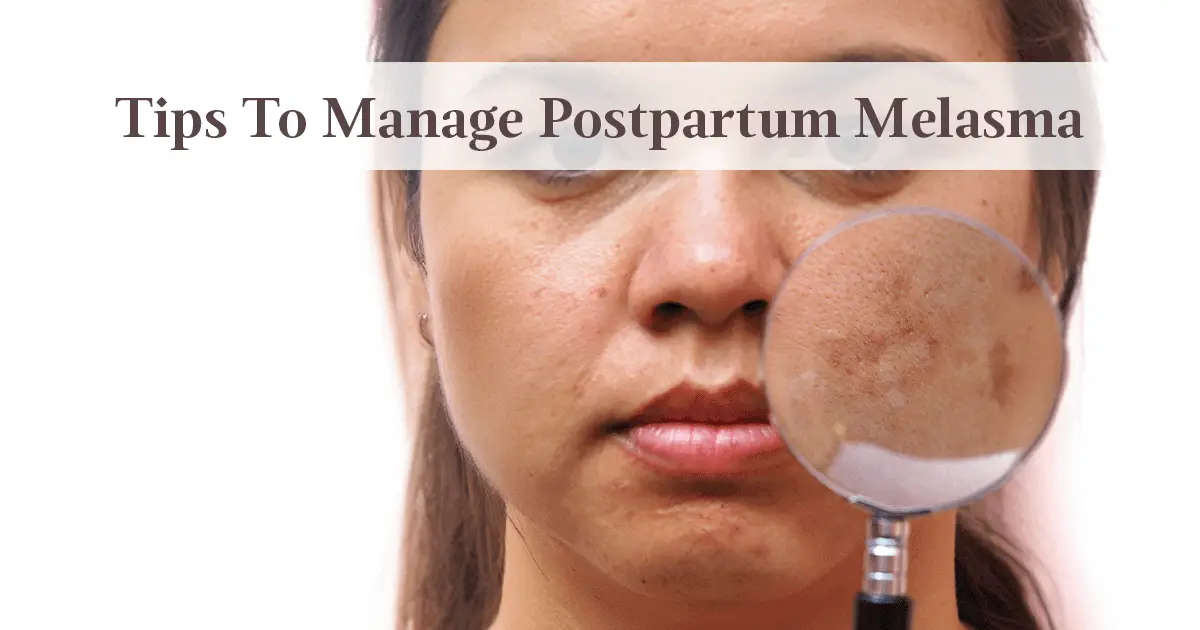
Are you approaching the 3rd trimester of your pregnancy? Or have you just given birth? And if yes, have you noticed a few dark brown patches on your skin that resemble a mask? Then you could be affected with melasma or ‘mask of pregnancy’ as we commonly call it.
Melasma is a skin condition where people (more commonly women) develop flat patches of hyperpigmentation on the face and forearms. But what exactly do we mean by hyperpigmentation? These are areas with excess deposition of melanin, the pigment responsible for imparting colour to our skin & eyes.
Up to 70% of women during pregnancy fall victim to this pesky skin condition.1 It usually manifests in their second or third trimesters. And the dark spots can last for months and even years after giving birth.
While melasma on face or other body parts doesn’t pose any health risks, it affects women emotionally. Hence it’s important to understand what causes melasma. And what are the ways to manage or treat this condition? We’ll be answering all such questions in detail in this blog. So stay tuned and read on.
Post Contents [hide]
What Causes Melasma?
The overactivation of melanocytes (cells that produce melanin) can lead to hyperpigmentation associated with melasma. This could happen due to several reasons like:2
-
Pregnancy:
Pregnancy brings about a lot of hormonal changes. And that is a contributing factor to melasma. It’s believed that high levels of estrogen & progesterone (female reproductive hormones) can lead to this skin darkening during pregnancy.
-
Medications:
Birth control pills & hormonal therapies are also contributing factors to melasma.
-
Sun exposure:
Sunlight exposure is another factor which can trigger the condition & make melasma worse.
-
Genetics:
Genetic predisposition is also something that can leave a woman more susceptible to developing melasma
That said, let’s understand how melasma is diagnosed.
How Is Melasma Diagnosed?
Melasma diagnosis entails a close physical examination of the affected area. Your dermatologist will use a dermatoscope or a Wood’s lamp for examination. Before starting treatment it’s important to rule out other similar-looking conditions. For this reason, the doctor may perform a quick biopsy (a procedure to remove a small piece of tissue for examination).2
How Is Melasma During Pregnancy Treated?
The pregnancy melasma generally goes away after a few months of delivering the baby. But sometimes the marks take months to even years and that can cause a lot of emotional distress among women. So let’s look at ways of how melasma can be treated.
-
Skin Lightening Treatment:
Several topical preparations are available in the market to help tackle the problem of melasma. The active ingredients in these include hydroquinone, tranexamic acid, and hydrocortisone which are found to be effective in treating melasma hyperpigmentation.2 However some of these ingredients may not be safe for pregnant or breastfeeding mothers.3 Hence it’s important to opt for a natural alternative which is safe for use by women who are struggling with melasma postpartum.
A very good choice for these women could be AreoVeda’s Skin Brightening Serum. It’s a skin-radiating serum for new moms that targets dark spots & provides even skin tone. Made from powerful natural ingredients like NaturepepPea & Bakuchiol which are proven to reduce hyperpigmentation, this serum starts to show results within a month!
-
Chemical Peels:
Dermatologists also go by chemical peels like glycolic acid to reduce melanin, or the pigment responsible for skin darkening.4 While limited studies have checked the safety of these in pregnant & breastfeeding mothers, there are few peels which may be considered safe.5 Check with your doctor for more personalised advice.
-
Light-based Therapies:
The last resort usually, is a light-based or laser therapy when the topical treatments & chemical peels don’t turn out as effective. But you need to be aware that there is no guarantee of success with this therapy & your melasma may bounce back.6
Conclusion
So, like we said, it’s important to be aware that melasma, though not usually a health risk, can be psychologically distressing to women when they’re pregnant or postpartum.
To prevent melasma from worsening, wear sun protection when heading out or a wide hat. With a little patience & the right treatment, it usually goes away within months of delivery. And if you or someone you know are struggling with pregnancy melasma but are unsure of chemical treatments or lasers, you should definitely give AreoVeda’s Skin Brightening Serum a shot. It’s safe for new moms & visibly reduces hyperpigmentation within 28 days of consistent usage.
For more details visit www.areoveda.in.
*Disclaimer: The information in this blog is not intended or implied to be a substitute for professional medical advice, diagnosis, or treatment.
FAQs
Is Melasma After Pregnancy Permanent?
Postpartum hyperpigmentation or hyperpigmentation during pregnancy usually goes away within a year of having the baby.
Is Melasma After Pregnancy Permanent?
No, in most cases, melasma will go away on its own after delivery of the baby. But in some cases, medical interventions may be required.
Does Melasma Affect My Baby?
No, melasma won’t affect your baby. But some products to treat melasma might. So consult with a doctor before using any medication or topical creams during pregnancy.
Who Is Most At Risk For Melasma?
Women with a darker skin tone are more likely to develop melasma.













